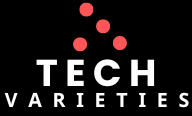In the ever-evolving field of artificial intelligence (AI), data annotation stands as a cornerstone. It is the process of labeling data, making it comprehensible for machine learning algorithms. High-quality data annotation is crucial for training AI models to recognize patterns, make decisions, and predict outcomes. In this blog post, we will delve into the world of data annotation, its importance, methods, challenges, and future trends, providing you with a comprehensive understanding of this vital component of AI.
What is Data Annotation?
Overview: Data annotation is the process of labeling or tagging data to provide context for machine learning algorithms. This labeled data helps AI systems understand and learn from input data, enabling them to make accurate predictions and decisions.
Types of Data Annotation:
- Image Annotation: Involves labeling objects within images, such as bounding boxes around cars in a traffic scene.
- Text Annotation: Includes tagging parts of speech, named entities, or sentiment in text data.
- Audio Annotation: Entails labeling sounds or transcribing speech to text.
- Video Annotation: Involves tagging objects and actions in video frames.
Why is Data Annotation Important?
Overview: The success of any AI or machine learning model heavily relies on the quality and accuracy of the annotated data used for training. Well-annotated data ensures that models learn correctly and perform efficiently in real-world applications.
Key Benefits:
- Improves Model Accuracy: High-quality annotated data leads to better-trained models, improving their accuracy and reliability.
- Enhances User Experience: In applications like chatbots or recommendation systems, accurate data annotation helps provide better user experiences.
- Facilitates Real-World Applications: From autonomous vehicles to medical diagnostics, annotated data enables AI systems to operate effectively in various domains.
Methods of Data Annotation
Overview: Various methods are used to annotate data, each suitable for different types of tasks and data sets. Here are some common techniques:
Manual Annotation:
- Human Labelers: Involves individuals manually labeling data. This method is often used for complex tasks requiring human judgment.
- Crowdsourcing: Platforms like Amazon Mechanical Turk allow multiple individuals to annotate data, speeding up the process.
Automated Annotation:
- Pre-Trained Models: Uses existing AI models to annotate data automatically. This method is fast but may require further human verification.
- Semi-Automated Tools: Combines automated tools with human oversight to improve accuracy.
Annotation Tools:
- Labelbox: A popular platform for managing and annotating data across different formats.
- SuperAnnotate: Offers advanced annotation features for images, videos, and text.
- Amazon SageMaker Ground Truth: Provides automated data labeling using machine learning.
Challenges in Data Annotation
Overview: Despite its importance, data annotation presents several challenges that need to be addressed to ensure high-quality results.
Common Challenges:
- Quality Control: Ensuring consistency and accuracy in annotations is crucial and can be challenging, especially with large data sets.
- Scalability: Annotating large volumes of data requires significant time and resources.
- Bias: Human annotators may introduce bias, affecting the fairness and performance of AI models.
- Cost: Manual annotation can be expensive, particularly for projects requiring specialized knowledge.
Future Trends in Data Annotation
Overview: As AI and machine learning continue to evolve, so too will the field of data annotation. Emerging trends are set to shape the future of this crucial process.
Trends to Watch:
- AI-Assisted Annotation: Increased use of AI tools to assist human annotators, improving speed and accuracy.
- Synthetic Data: Creating annotated synthetic data to supplement real-world data, especially in scenarios where obtaining real data is challenging.
- Active Learning: A machine learning approach where the model identifies and requests annotation for the most informative data points, optimizing the annotation process.
- Collaboration Platforms: Enhanced platforms that facilitate better collaboration between annotators and AI researchers, ensuring high-quality data sets.

